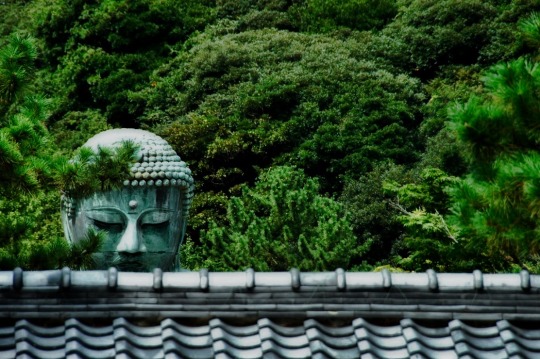#kotokuin
Text

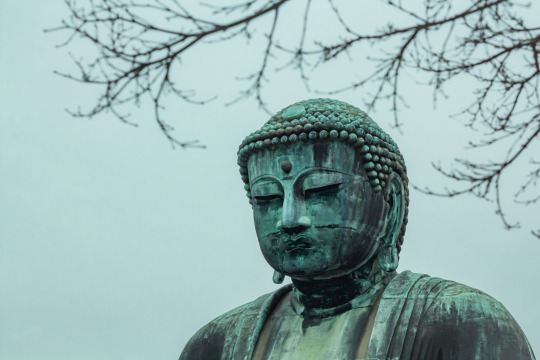

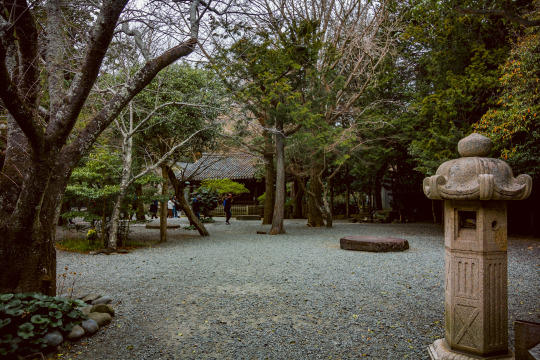

高徳院 Kotoku-in Giant Buddha
#kotokuin#buddha#daibutsu#kamakura#giant buddha#kanagawa#japan#photography#original photography blog#japan photos#temple#shrine
11 notes
·
View notes
Photo

A group of haiku poets, writers, and associates at Kōtokuin Temple (高徳院) in Kamakura, Kanagawa Prefecture during the early 20th century with its large bronze image of Amida Buddha in the background
From the left are Hoshino Ritsuko (星野立子), Takahama Kyoshi (高浜虚子), Prince Mikasa no Miya Takahito (三笠宮崇仁), Yoshiya Nobuko (吉屋信子), Mon’ma Chiyo (門馬千代), Ueno Yasushi (上野泰), and Satō Naoko (佐藤治子)
Image from the temple’s official website
#buddhist temple#historic photo#神奈川県#kanagawa prefecture#鎌倉市#kamakura#高徳院#kotokuin#清浄泉寺#shojosenji#鎌倉大仏#kamakura daibutsu#japanese literature#japanese poetry#星野立子#hoshino ritsuko#高浜虚子#takahama kyoshi#三笠宮崇仁#mikasa no miya takahito#吉屋信子#yoshiya nobuko#門馬千代#monma chiyo#上野泰#ueno yasushi#佐藤治子#sato naoko
49 notes
·
View notes
Text
Wanderlust - 25 Travel Posters
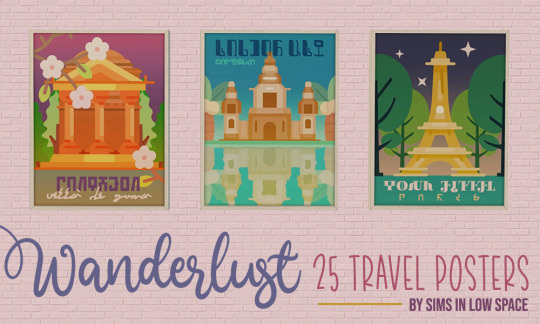
Good morning! Today I'm sharing some new travel posters for your game!
I wanted to make more travel posters, but I decided to use real world destinations this time. There are 25 designs total:

A numbered swatch is included so you can easily keep just what you like. I've also included @linacheries’ lovely 4t2 conversion of Simsza’s National Park Prints mesh. The landmarks are:
Row One: The Great Wall of China, Kotokuin Temple, the Kinderdijk Windmills, Chichen Itza and the Colosseum
Row Two: The Statue of Liberty, Itsukushima Shrine, Hallgrimskirkja, The Tower of Pisa and the Great Sphinx of Giza
Row Three: St. Paul's Cathedral, Chiang Kai Shek, Moai, Mt. Fuji and the Empire State Building
Row Four: Angkor Wat, the Pantheon, the Milan Cathedral, Stonehenge and the Eiffel Tower
Row Five: The Arc de Triomphe, Borobudur, the Forbidden City, Big Ben and the Ming Tombs
Huge thanks to kerismaker for the landmark icons, plus Freepik, max.icons, smashingstocks, Icongeek26, faith-arici, justicon and luvdat for the rest.
DOWNLOAD (SFS) Recolors are just under 1MB
Lots of love,
Spacey
PS - Going to be getting caught up on comments, messages, etc. this weekend. Thank you for all the feedback! Sorry I've been slow to reply but I appreciate all your kindness <3
TS4 Conversion
#s2cc#ts2cc#ts2 download#ts2 custom content#sims 2 download#sims 2 custom content#s2 cc#ts2 art#ts2#ts2 wall decorations#ts2 posters
219 notes
·
View notes
Text
Wanderlust - 2t4 Travel Poster Conversions

More travel posters! Details and download below:
These are the designs from the TS2 Wanderlust poster set I shared yesterday on Sims in Low Space. They feature 25 real world destinations on @simsza's fabulous mesh from his Simlish Anderson National Park Prints Set:
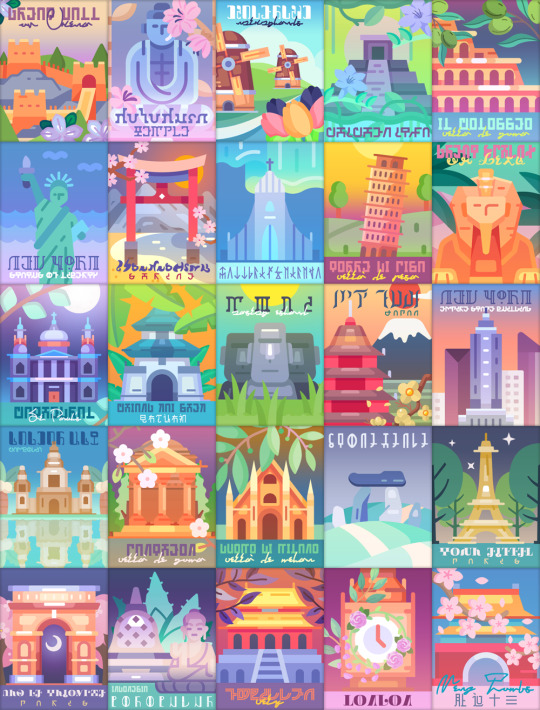
I did not include the mesh with this set. I'm not wild about redistributing it since it comes with all the original designs, so make sure you grab it if you don't already have it!
The landmarks are:
Row One: The Great Wall of China, Kotokuin Temple, the Kinderdijk Windmills, Chichen Itza and the Colosseum
Row Two: The Statue of Liberty, Itsukushima Shrine, Hallgrimskirkja, The Tower of Pisa and the Great Sphinx of Giza
Row Three: St. Paul’s Cathedral, Chiang Kai Shek, Moai, Mt. Fuji and the Empire State Building
Row Four: Angkor Wat, the Pantheon, the Milan Cathedral, Stonehenge and the Eiffel Tower
Row Five: The Arc de Triomphe, Borobudur, the Forbidden City, Big Ben and the Ming Tombs
Huge thanks to kerismaker for the landmark icons, plus Freepik, max.icons, smashingstocks, Icongeek26, faith-arici, justicon and luvdat for the rest.
DOWNLOAD (SFS) Recolors ~2MB
Get the mesh from Simsza
Original TS2 set
Lots of love,
Spacey
#s4cc#ts4cc#ts4 cc download#ts4 cc#ts4 download#the sims 4 cc#ts4 custom content#ts4 art#ts4 posters#maxis match#ts4 maxis match#ts4 maxis cc#2t4#ts4 cc free
93 notes
·
View notes
Text
千葉県
Japanese Prefectures: Kantō - Chiba
都道府県 (とどうふけん) - Prefectures of Japan
Learning the kanji and a little bit about each of Japan’s 47 prefectures!
Kanji・漢字
千 ち、セン thousand
葉 は、ヨウ leaf, lobe
県 ケン prefecture
関東 かんとう Kantō, region consisting of Tokyo and surrounding prefectures
Prefectural Capital (県庁所在地) : Chiba City (千葉市)
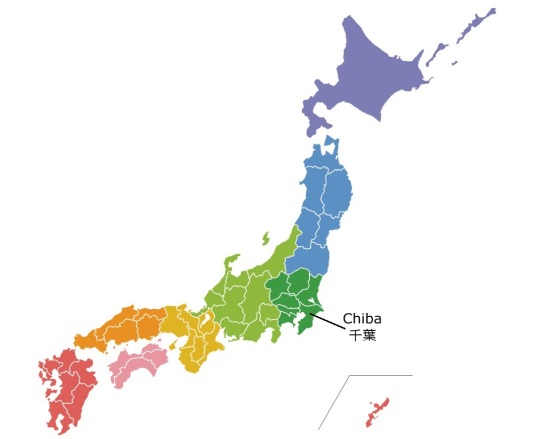
Chiba lies on the Bōsō Peninsula on the east coast of Tokyo Bay, about 20 miles (30 km) southeast of central Tokyo, and boasts many international facilities such as Narita International Airport, known as the gateway to Japan); Makuhari Messe, one of the most prominent convention centers in Asia; Kazusa DNA Research Institute, a world leader in cutting edge research; and Tokyo Disney Resort, with two theme parks that draw in 30 million patrons each year. It also boasts beaches for swimming, surfing, and diving and was the location for the first Olympic surfing games. Historically, Chiba was a castle town controlled by the Chiba family in the 12th–15th century, and during the Edo (Tokugawa) period (1603–1867) it served as a post-station town for several major roads. After the construction of a railway connecting it to Tokyo, the town began to grow in the second half of the 19th century.
Recommended Tourist Spot・おすすめ観光スポット Mt Nokogiri - 鋸山
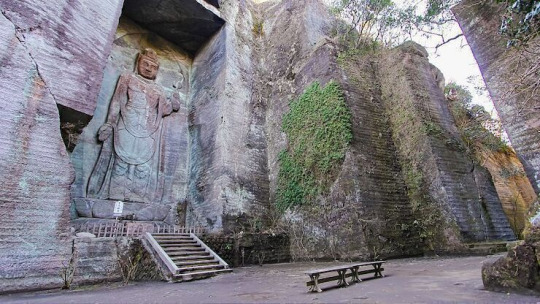
Mt. Nokogiri - Hyaku-Shaku Kannon carved into stone cliff
Mt. Nokogiri is named for the zigzag shape of a traditional handsaw that its topography resembles. Along with Mt. Kanozan and Mt. Kiyosumi, Mt. Nokogiri is one of Chiba's three most famous mountains. It stands at 330 meters high and features a grand lookout point as well as a temple complex containing one of Japan's largest Buddhas. The mountain is bare granite and has been a quarry since the Edo Period, providing stones for many of Tokyo's most iconic sites, such as Yasukuni Shrine and Waseda University. You can reach the top by an easy hike or via a ropeway to the top. Hell Lookout (地獄のぞき) is a lookout point at the top of the mountain that hangs over the edge of the cliff and offers a stunning view of Tokyo Bay, the Pacific Ocean, and the distant forests and hills of the Boso Peninsula, and on clear days, Mt. Fuji.
At the southern base of Mt. Nokogiri is Nihonji Temple (日本寺), an officially designated Important Cultural Property. There's a stairway leading from the top of the mountain down to the vast, picturesque Soto Zen Buddhist temple that dates back 1300 years and is still used to train young monks today. A giant daibutsu, or Buddha statue, is carved into the granite on the side of Mt. Nokogiri about midway up the mountain. It is 31 meters high and one of Japan's largest Buddhas, even larger than Kamakura's famous daibutsu at Kotokuin Temple. The statue was built to pray for world peace and most of the statue was carved over three years beginning in 1780.
In addition to the giant daibutsu, there are around 1500 small statues of various Buddhist deities around the temple grounds. Unfortunately, many of the smaller statues were beheaded during the anti-Buddhist movement that accompanied the Meiji Restoration, but there are ongoing efforts to repair them. This part of Nihonji was a spiritual sanctuary built over 21 years in the 18th century by craftsman Ono Kangoro and his students. Towards the top of the mountain stands a 30-meter tall Hyaku-Shaku Kannon, depicting the Buddhist Goddess of Mercy. Carved in 1966 into a stone cliff, it is dedicated to those who died in wars, of sickness or in accidents. The Kannon is also worshiped as a protector of transportation due to its protected location surrounded by rocks.
Regional Cuisine - 郷土料理
Sangayaki - さんが焼き
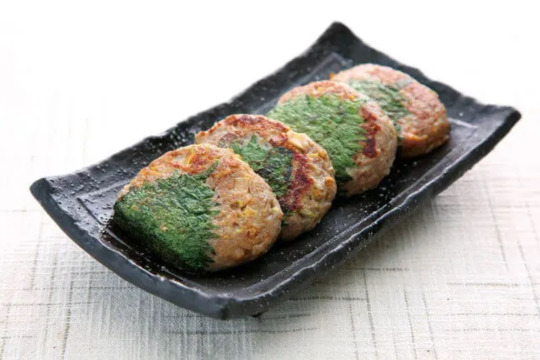
Sangayaki (source)
Namerou and sangayaki are well-known Chiba dishes, especially along the Bōsō Peninsula. Namerou (なめろう) is a dish usually made of minced horse mackerel and sardine mixed with miso, perilla leaves, and leek. When grilled and wrapped in perilla leaves, it is called sangayaki (さんが焼き). The name "namerou" may have come from the fact that namerou is so good that you want to lick your plate clean (nameru means to lick). The name "sangayaki" may be from the fact that the fishermen ate the dish along a river tributary, or sanga, and the word yaki means to grill (like yakisoba or yakitori). Namerou can be cooked in other ways, such as being shaped and grilled like a burger, or being coated in breadcrumbs and fried.
Chiba Dialect・Chiba no hougen・千葉の方言
Note: Chiba dialect is sometimes called Bōsō-ben (房総弁), after the peninsula. Chiba dialect is actually a family of three dialects: Bōshū-ben (房州弁), Tōsō-ben 東総弁, and Noda-ben (野田弁).
Bōshū-ben (房州弁)
1. おいねえ oinee not good
はしけえでおいねえや (hashikee de oinee ya)
Standard Japanese: かゆくていけないよ (kayukute ikenai yo)
English: This itches so badly
2. くわっせえ kuwassee please eat (command)
ばーさんほら、わーかでいーがらくわっせぇよ (baa-san hora, wa-ka de iigara kuwassei yo)
Standard Japanese: おばあさんほら、少しでいいから召し上がってよ (obaasan hora, sukoshi demo ii kara meshi agate yo)
English: Grandma, come on, please just eat a little bit
3. やんべえ yanbee health; condition (often used in a greeting)
いいやんべえだねえ (ii yanbee da nee)
Standard Japanese: こんにちは (konnichiwa)
English: Hello; Good day (lit. "you are in good health today")
Tōsō-ben 東総弁
1. あじょうだぁ ajyou daa how is it
あじょうだぁ? (ajyou daa?)
Standard Japanese: どうですか? (dou desu ka?)
English: How is it?
2. ねっけぇ nekkee warm
今日はずいぶんとねっけぇね (kyou wa zuibun to nekkee ne)
Standard Japanese: 今日はずいぶんと暖かいね (kyou wa zuibun to atatakai ne)
English: Today is fairly warm, isn't it?
3. わんらー wanraa you (informal, not very polite)
わんらーよー!んなことやってねーよ! (wanraa you! 'n na koto yatte nee yo!)
Standard Japanese: あなたねえ!そんな事しないでよ! (anata nee! sonna koto shinai de yo!)
English: Hey you! Stop doing that!
Noda-ben (野田弁)
1. こわい kowai difficult, taxing, bothersome
風邪ひいででまーだこわいだよなぁ (kaze hiide de maa-da kowai da yo naa)
Standard Japanese: 風邪を引いていてまだ身体がだるいんだよね (kaze wo hiite ite mada karada ga daruin da yo ne)
English: I have a cold and my body still feels listless
2. はらくち harakuchi full
はらくちだよなぁ (harakuchi da yo naa)
Standard Japanese: お腹いっぱいだよね (onaka ippai da yo ne)
English: I'm full
3. やっこら yakora soon
やっこらいくべ (yakora iku be)
Standard Japanese: そろそろいこうか (sorosoro ikou ka)
English: Shall we go soon?
#japanese prefectures#日本語#japanese#japanese language#japanese langblr#langblr#studyblr#都道府県#千葉県#chiba
34 notes
·
View notes
Text




weather was great today so I did the daibutsu hike in kamakura. my legs feel all wobbly now because I hadn't hiked in a veeery long time, but it was fun. places I visited: engakuji, jochiji, kuzuharaoka jinja, genjiyama park, zeniarai benzaiten jinja, kotokuin, hasedera, goryo jinja
I think my favorite was engakuji, but I suspect it's partly because I got there super early in the morning before the other tourists arrived so it was more pleasant to walk around. the walk up the stairs to see the treasure bell was a nightmare, but in retrospect it was also a good warmup for the hike... jochiji and kuzuharaoka jinja were nice, simple and relaxing. benzaiten jinja was beautiful; I wish I could've seen sasuke inari jinja too but it wasn't on the hiking trail so... next time. kotokuin was alright. the daibutsu -is- impressive but it's also one of the main tourist attractions of the city (if the weather forecast had been different I'd have tried to visit on a weekday to enjoy it more). hasedera was gorgeous with the plum blossoms but also very crowded in the afternoon, as expected; none of the pictures I took look good, but anyway the most beautiful part of it is the kannon statue and you can't take pictures of that obviously. goryo jinja is probably my second favorite; very quiet and peaceful, especially in the late afternoon

oh and the yoritomo statue in genjiyama park. he's just sitting there
29 notes
·
View notes
Note
What are your thoughts on Tsuchimikado? You rated him at the top along with Iori and Chiemon on your F/SR tierlist on twitter, which was surprising to me because of how little screentime he got.
I feel like everything I could say about him I already said on Twitter. I'll copy-paste myself about it under the cut (with some edits since my opinions evolved with time) but in the open section of the post, I got a new comment to make.
Yes, we don't see Yasuhiro much. I agree with that. But I think that works completely to the character's benefit. It's what I've been always talking about Sayaka Maizono. Writing efficiency. Making the character feel complete with minimal screentime is always impressive. Maizono does the trick by establishing she dedicates 100% of her time to a single thing and exploring the psychological consequences of taking that thing away from her. Yasuhiro does the trick by ultimately revealing that despite the size of his action, his goal was incredibly small-time and unambitious.
Notice how both of these characterization bits are only tangential to Maizono's role as a tone-setter for the rest of the franchise and Yasuhiro's role as the background reason why the Grail War exists. They technically didn't need this and only got this out of care for fleshing them out, and most importantly, they got this in a way that doesn't distract from the actual needs of the story. That's writing efficiently.
Tweet copypastes:
FSR is a story made of blatant connections to Shimousa, which makes it easy to notice the similarities in Yasuhiro's and Douman's methods. But now knowing the background of Yasuhiro's obsession, the parallels suddenly run a lot deeper.
It was in Yasuhiro's father's generation that the Tsuchimikado family lost the authority on onmyoudou to the Koutokui family. The only way for Yasuhiro to recover from this loss is to prove himself better than Koutokui Tomosuke. And that drives him off the deep end.
It's Douman vs Seimei but with historical nobodies (down to Seimei being entirely offscreen). And it certainly feels to me like Seimei left his Grail War notes to Yasuhiro because he saw some Douman in him and wanted to offer this chance at success. Douman is Seimei's soft stop.
Yasuhiro is a big liar and manipulator, so the idea of Yasuhiro genuinely wanting to give his Grail to the shogun feels laughable, but then we hear the genuine joy in his voice when the council elder calls him better than Tomosuke. That voice crack Mikami did there is easily the best bit of voice acting in all of Samurai Remnant.
Knowing the scale of Yasuhiro's goal, you can say he won. The promise of the Waxing Moon was already enough to make him the authority on Onmyoudou, and he successfully taught Takatoshi to make the best out of his talents even if they aren’t the expected ones for the job.
I know this Digression is literally the day after he dies, but there it shows Takatoshi maintaining the status of authority instead of it immediately returning to Tomosuke, so that’s a positive sign for Yasuhiro’s goals, right?
That alone already rounds up Yasuhiro's character perfectly, but it gets better when you look up real-life context about the Tsuchimikado family that the game never tells you.
FSR is a pruned event where Yasuhiro is allowed to fulfill his goals. His father's scandals may have let the Kotokui family take over as the authority in onmyoudou, but Yasuhiro restores the Tsuchimikado by offering this ultimate miracle to the shogun.
He dies in the process but he was prepared for it. He taught Takatoshi to make the best of the talents he had to compensate for the ones he lacked. The Tsuchimikado was ultimately in good hands. Everything was perfect for him. In this pruned event.
This naturally raises one question: what happens when things don't go as he wanted? What happens in Pan-Human History. Well, I checked and the answer was... Takatoshi's son simply proved himself better than the Kotokuin and Tsuchimikado regained their status, no Waxing Moon necessary.
Yasuhiro did so much shit that he ultimately didn't need to do because he'd get what he wanted anyways exactly one generation later. The point I'm trying to make here is: Seimei is a meanie.
20 notes
·
View notes
Text
What to do in Kamakura: the sightseeing guide or something…
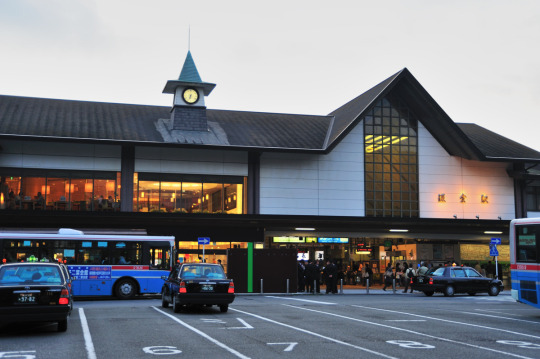

The Kamakura Station, real and the manga versions
It is said to be less than an hour from Tokyo by train and one of the ancient cities in Japan along with Kyoto. Because of the countless shrines and temples, it is called the Kyoto of the East.
So where do you think the gang is going for a sightseeing ?
1) The Great Buddha of Kamakura. The Amida Buddha, which “referred to in Sanskrit as Amitabha Tathagata—the Buddha of Limitless Light, sits upon a lotus pedestal with his hands forming the mudra of meditation,” stands 11.4 meters on the grounds of Kotokuin Temple.
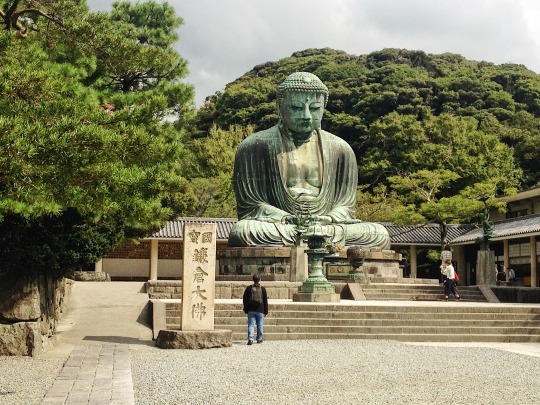
2) Hase Temple. It is said to the temple of the Jodo sect, one of two old sects that brought Buddhism to Japan, and in there resides the “famous eleven-headed statue of Kannon, the goddess of mercy.”
3) Enoshima is an island that has shrines, an aquarium, caves, an observatory tower and a beach that is very popular during summer where surfers like to go.
Searching for possible Lunar New Year festivities in Kamakura city owing to the many Shinto shrines and Buddhist temples located there, I encountered this passive aggressive information on this unofficial website.
Hari kuyo {hah-re-koo-yoh} at Egara Tenjin, 8th February
Hari is literally a needle, and Hari Kuyo is a memorial service in honor of used needles just like the Fude Kuyo (calligraphy brush memorial service). Nowadays, young women do not use needles, nor do they know how to sew. Until a couple of decades ago, however, needles had been one of the most important tools women had to use. Sewing is a technique required of women to master before marriage. The memorial service for needles was thus started years ago and it is still honored in various shrines.
I’ve heard of the funeral rite and a Buddhist temple for discarded dolls in Kyoto, but broken needles? Fascinating. This is in keeping with their animist tradition.
Source
#kamonohashi ron no kindan suiri#kamakura#ron kamonohashi#totomaru isshiki#akira amano#chapter 120#chikori monki
16 notes
·
View notes
Text
6 Best Tours to Book in Japan
6 Best Tours to Book in Japan
Japan is a country that captivates travelers with its unique blend of ancient traditions, culture, and history. From the bustling streets of Tokyo to the serene temples of Kyoto, there is something for everyone to enjoy in this diverse and fascinating country. Below are the 6 best tours to book in Japan!
#1: Kamakura Tour with Kotokuin Great Buddha-
Great Buddha…

View On WordPress
0 notes
Photo

One of the most beautiful temples we’ve been to. Kotokuin Temple is home to the Great Buddha of Kamakura, Amida Buddha. We had a relaxed morning at the temple grounds, in awe of the lush trees and beautiful flowers around us. (at Kotokuin Temple, Kamakura) https://www.instagram.com/p/CqFOmjBvqWj/?igshid=NGJjMDIxMWI=
0 notes
Photo
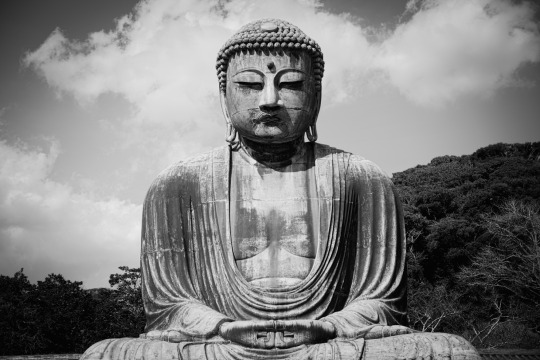
...
#fameone#kamakura#kanagawa#japan#black and white photography#black and white#buddhism#kotokuin#daibutsu#photography#photographers on tumblr
23 notes
·
View notes
Photo

An illustration depicting Kōtokuin Temple (高徳院) and its large bronze image of Amida Buddha in Kamakura as it was in the mid-17th century
From “Tales of Kamakura” (鎌倉物語 “Kamakura Monogatari”) by Nakagawa Kiun (中川喜雲) and illustrated by Hishikawa Moronobu (菱川師宣), published in 1659
Image from the temple’s official website
#buddhist temple#神奈川県#kanagawa prefecture#鎌倉市#kamakura#高徳院#kotokuin#清浄泉寺#shojosenji#鎌倉大仏#kamakura daibutsu#阿弥陀如来#阿弥陀#amida nyorai#amida#amitabha#early modern printing#book illustration#中川喜雲#nakagawa kiun#菱川師宣#hishikawa moronobu#鎌倉物語#kamakura monogatari#鎌倉名所記#kamakura meishoki
22 notes
·
View notes
Video
Kotoku-in Kamakura Daibutsu (高徳院 鎌倉 大仏) by Hong Seongwan
Via Flickr:
Kamakura, Kanagawa-ken, Japan
11 notes
·
View notes
Text

📍 Kōtoku-in 高徳院 — Kamakura, Kanagawa Prefecture, Japan
#kotokuin#kamakura#daibutsu#kanagawa#高徳院#大仏#鎌倉#神奈川県#ardiedoes#original photography on tumblr#photographers on tumblr#original photographers#japan#日本#japan pics#japan travel#japan photos#buddhist temple#buddhism#japanese culture
4 notes
·
View notes

